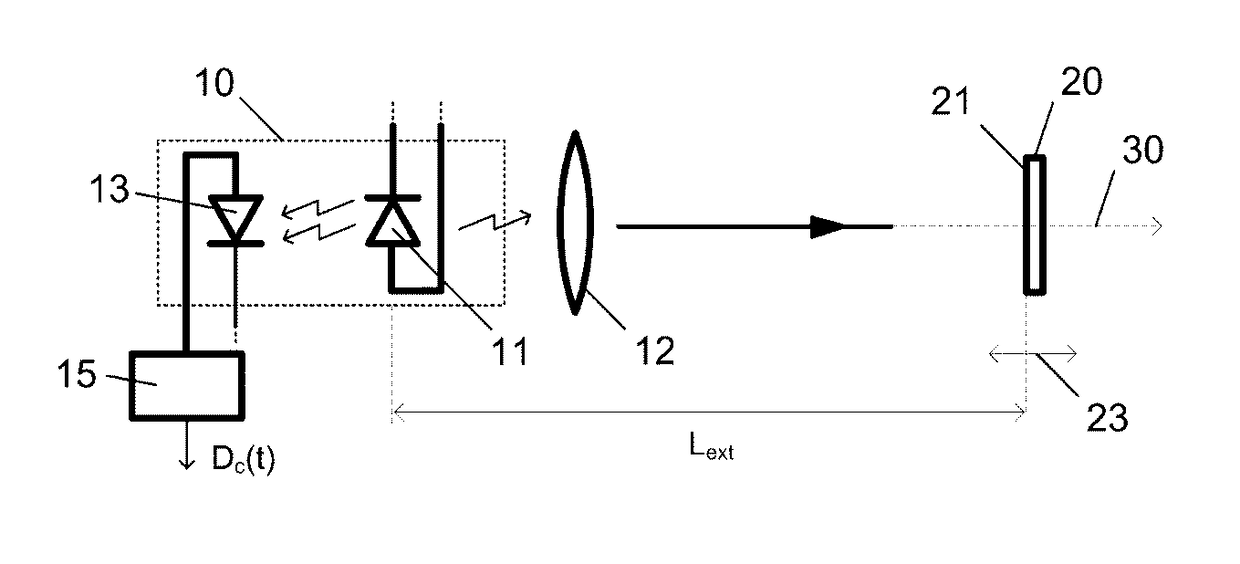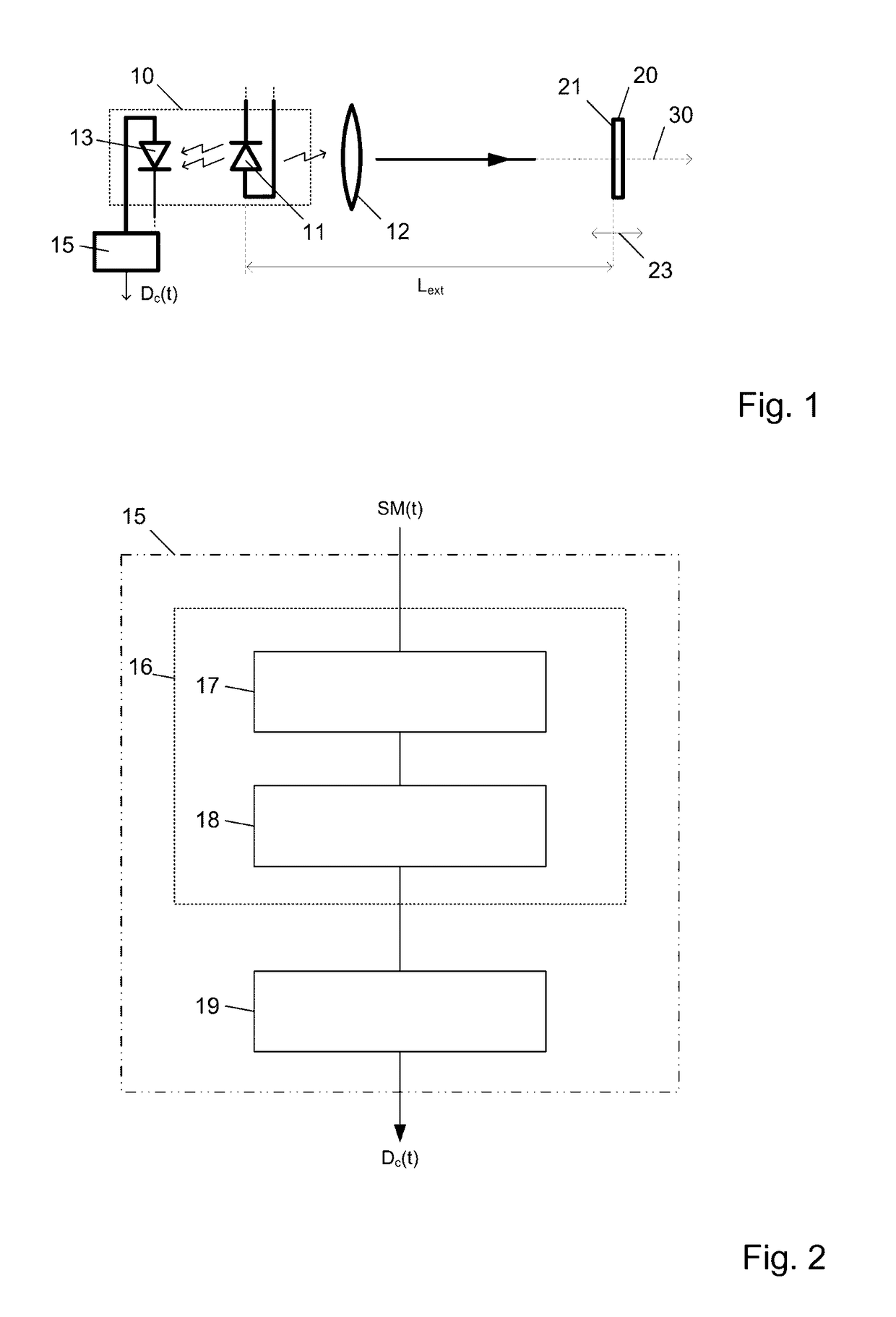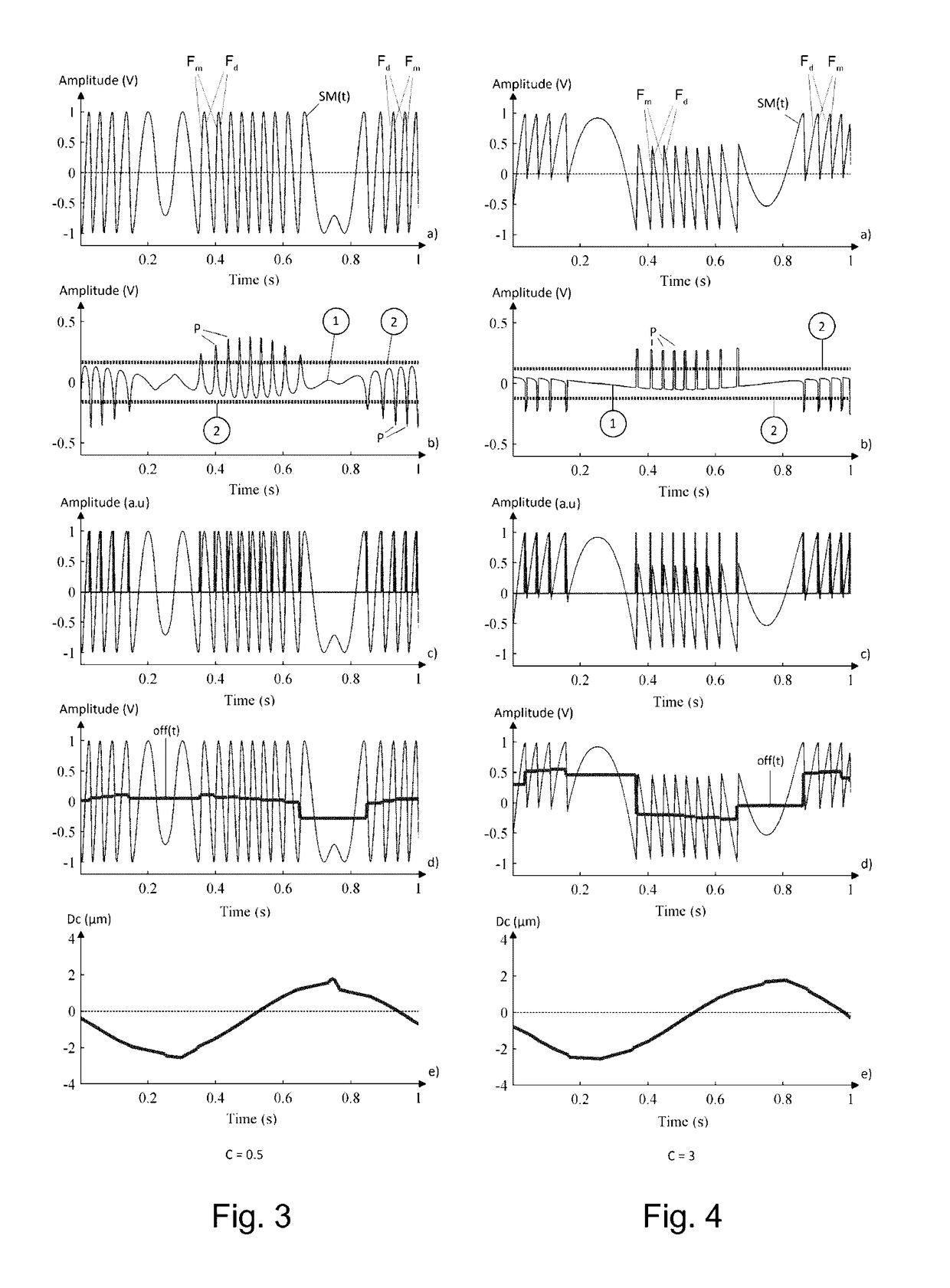Resetting and hilbert filtering of self-mixing interferometric signal
a self-mixing, interferometric technology, applied in the direction of measurement devices, instruments, optical radiation measurement, etc., can solve the problems of interference in the active cavity of the laser source, the inability to produce compact sensors that are easy to use and inexpensive, and the inability to achieve accurate measurement results. , to achieve the effect of improving the accuracy of the movement of the target, realizing the use in an industrial setting
- Summary
- Abstract
- Description
- Claims
- Application Information
AI Technical Summary
Benefits of technology
Problems solved by technology
Method used
Image
Examples
example 1
[0186]the target 20 was covered with P40 sandpaper having an average roughness of 425 μm.
[0187]The results obtained are shown in FIGS. 8a to 8d.
[0188]FIG. 8a illustrates the interferometric signal SM(t) measured by the photodiode. It may be seen that the amplitude of the signal is degraded, due to the speckle effect.
[0189]FIG. 8b illustrates the filtered interferometric signal SMf.
[0190]FIG. 8c illustrates the interferometric signal SM(t) and the calculated continuous component Off(t) (all the local components measured per fringe).
[0191]FIG. 8d illustrates the reconstructed movement Dc(t).
[0192]This first example clearly illustrates the fact that the measuring device according to the invention allows the actual movement of a rough target to be reconstructed.
example 2
[0193]the target was covered with a phosphorescent material active in the infrared and exhibiting slow fading, namely the material VRC2 from Thorlabs®.
[0194]The results obtained are shown in FIGS. 9a to 9d.
[0195]FIG. 9a illustrates the interferometric signal SM(t) measured by the photodiode. It may be seen that the amplitude of the signal is clearly more degraded by speckle than for FIG. 8a. It may also be seen that the interferometric signal SM(t) is lost at the times t =0.5 ms and t=2.7 ms.
[0196]FIG. 9b illustrates the filtered interferometric signal SMf.
[0197]FIG. 9c illustrates the interferometric signal SM(t) and the calculated continuous component Off(t).
[0198]FIG. 9d illustrates the reconstructed movement Dc(t).
[0199]This second example perfectly illustrates the fact that the measuring device according to the invention allows the actual movement of a target to be reconstructed even in the presence of a temporary loss of information.
[0200]These examples clearly confirm the ro...
PUM
 Login to view more
Login to view more Abstract
Description
Claims
Application Information
 Login to view more
Login to view more - R&D Engineer
- R&D Manager
- IP Professional
- Industry Leading Data Capabilities
- Powerful AI technology
- Patent DNA Extraction
Browse by: Latest US Patents, China's latest patents, Technical Efficacy Thesaurus, Application Domain, Technology Topic.
© 2024 PatSnap. All rights reserved.Legal|Privacy policy|Modern Slavery Act Transparency Statement|Sitemap



